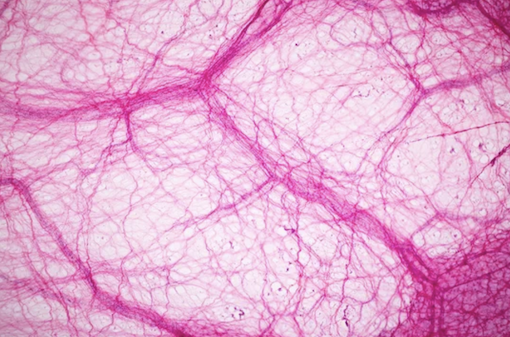The Role of Connective Tissue (Fascia) & How to Keep it Healthy
Blog Tag
 FASCIA: Keeping Your Connective Tissue Healthy & Flexible
FASCIA: Keeping Your Connective Tissue Healthy & Flexible
An Excellent Eye-Opening
FASCIA Documentary
For my interview on This Week in America covering the ABCs of "How to Keep Our Fascia Healthy & Flexible," click HERE.
 The fasciae (plural for fascia) are thin sheaths of fibrous tissue enclosing muscles and other organs.The fasciae (plural for fascia) are thin sheaths of fibrous tissue enclosing muscles and other organs. It's a continuous network throughout your entire body and it's crucial for health, pain perception, and movement.
The fasciae (plural for fascia) are thin sheaths of fibrous tissue enclosing muscles and other organs.The fasciae (plural for fascia) are thin sheaths of fibrous tissue enclosing muscles and other organs. It's a continuous network throughout your entire body and it's crucial for health, pain perception, and movement.
Recent research reveals fascia's complex role in immune function, fluid dynamics, and hormone response, prompting a paradigm shift in understanding human anatomy.
Fascia-focused therapies show promise in treating conditions like frozen shoulder and referred pain, revolutionizing pain management and physical performance optimization.
 As you will learn in this excellent documentary on "The Role of Connective Tissue," five key factors influence fascia health: movement, hydration, stress management, diet, and sleep. These are all topics I discuss in my book A HUG IN A MUG: Revitalize with Fruits, Veggies, Juices, Soups, Spices, Teas & Healthy Living Extras. You will learn more about the importance of keeping your fascia in tip-top shape in this book.
As you will learn in this excellent documentary on "The Role of Connective Tissue," five key factors influence fascia health: movement, hydration, stress management, diet, and sleep. These are all topics I discuss in my book A HUG IN A MUG: Revitalize with Fruits, Veggies, Juices, Soups, Spices, Teas & Healthy Living Extras. You will learn more about the importance of keeping your fascia in tip-top shape in this book.
Five Factors That Influence Fascia Health
Given the pervasive nature of fascia and its many critical functions, maintaining its health is clearly important for overall well-being. Here's a summary of what you'll learn in the documentary:
1. Movement — Regular, varied movement is crucial for keeping fascia hydrated and flexible. Sedentary lifestyles lead to fascia becoming stiff and "glued" together.
 2. Hydration — Proper hydration is essential for maintaining the optimal consistency of fascia.
2. Hydration — Proper hydration is essential for maintaining the optimal consistency of fascia.
3. Stress — Chronic stress causes fascia to tighten and lose elasticity.
4. Diet — Certain nutrients play a role in fascia health, though more research is needed in this area.
5. Sleep — Quality sleep is important for fascia recovery and regeneration.
New Therapeutic Approaches
1. Deep wave therapy — This involves using specialized machines that create gentle vibrations to restore fascia elasticity and improve fluid flow.
2. Manual fascia release — Skilled practitioners use hands-on techniques to release fascial restrictions and improve overall body function.
3. Movement therapies — Practices like yoga and certain forms of dance are being recognized for their ability to promote fascia health through varied, three dimensional movement patterns described in the documentary.
4. Holistic assessment — Practitioners are learning to assess the body as an interconnected whole, rather than focusing solely on the site of symptoms.
 The convergence of ancient wisdom and modern science could lead to more integrated, holistic approaches to health and healing. The emerging research on fascia aligns with many principles I've observed in my practice and research, which I wrote about in my books UPLIFTED and A HUG IN A MUG. These include...
The convergence of ancient wisdom and modern science could lead to more integrated, holistic approaches to health and healing. The emerging research on fascia aligns with many principles I've observed in my practice and research, which I wrote about in my books UPLIFTED and A HUG IN A MUG. These include...
⭐️ The body is an interconnected whole, not just a collection of separate parts.
⭐️ Many health issues have root causes that aren't immediately obvious and require a broader perspective to understand and treat.
⭐️ Movement and lifestyle factors play a crucial role in maintaining health and preventing disease.
⭐️ Your body has remarkable self-healing capacities when given the right conditions.
Summary on How to Improve Your Fascia Health
While fascia research is still in its early stages, there are some practical takeaways you can apply to improve your fascia health:
⭐️ Prioritize movement — Regular, varied movement is crucial for fascia health. This doesn't necessarily mean intense exercise — gentle activities like walking, stretching, and tai chi are beneficial.
⭐️ Stay hydrated — Proper hydration is essential for maintaining healthy fascia. Aim to drink plenty of clean water throughout the day.
⭐️ Manage stress — Chronic stress negatively impacts fascia. Incorporate stress-reduction techniques like meditation, deep breathing, or time in nature into your routine, all discussed in detail in my book UPLIFTED and also the companion book A HUG IN A MUG.
⭐️ Explore manual therapies — Techniques like massage, myofascial release, or osteopathic manipulation help maintain fascia health and address restrictions.
 ⭐️ Consider your posture — Poor posture creates fascial restriction over time. Be mindful of your posture throughout the day, especially if you spend a lot of time sitting.
⭐️ Consider your posture — Poor posture creates fascial restriction over time. Be mindful of your posture throughout the day, especially if you spend a lot of time sitting.
⭐️ Eat a nutrient-dense diet — A diet rich in anti-inflammatory foods and essential nutrients supports fascia health. In A HUG IN A MUG, I cover in detail all of the best anti-inflammatory foods and also include over 100 nutrient-dense, delicious, easy-to-prepare recipes that you and your family will love.
⭐️ Prioritize sleep — Quality sleep is so important for fascia recovery. Get tips on how to sleep like a baby every night in UPLIFTED.
By appreciating the intricate web that connects every part of our body, we can unlock new pathways to health, vitality, and longevity.



